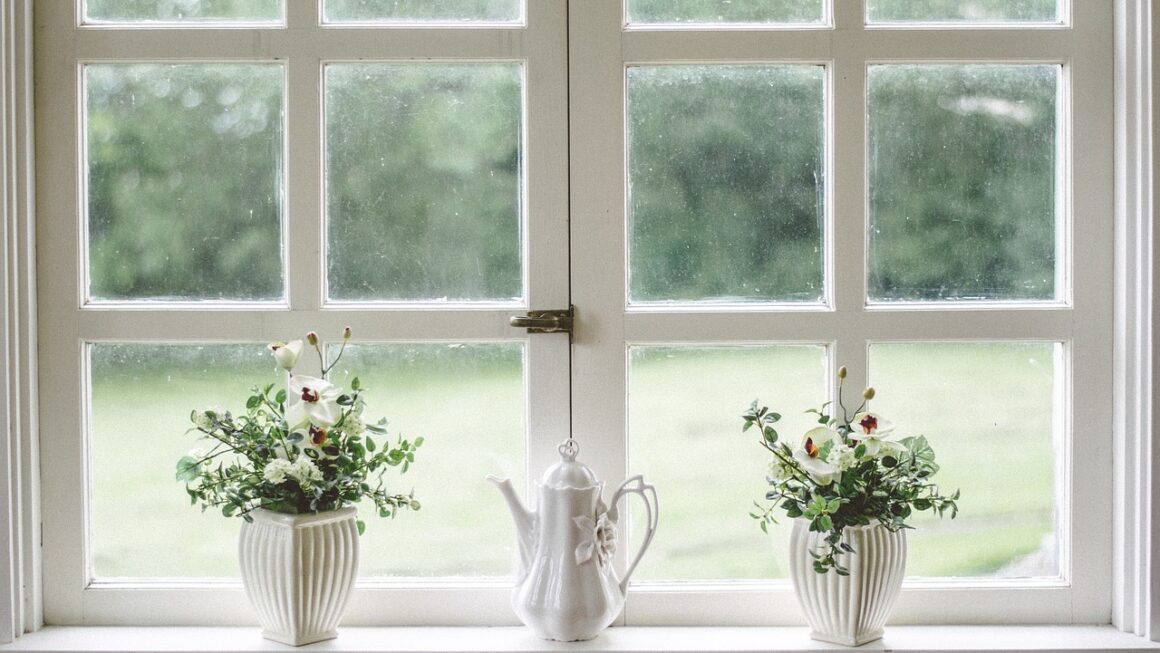Smart bulbs have revolutionized home lighting, offering convenience, energy efficiency, and a touch of personalization to our living spaces. Gone are the days of simply switching a light on and off; now, we can control brightness, color, and even schedule lighting changes from our smartphones. This guide explores the world of smart bulbs, covering their features, benefits, and how to choose the right ones for your home.
Understanding Smart Bulbs
Smart bulbs are light-emitting diode (LED) bulbs that can be controlled wirelessly, typically via Bluetooth or Wi-Fi. They offer a range of features beyond basic illumination, including dimming, color changing, and remote control.
How Smart Bulbs Work
Smart bulbs typically connect to your home network via Wi-Fi or communicate directly with a hub using protocols like Zigbee or Z-Wave. This connection allows you to control the bulbs using a smartphone app or voice commands through smart assistants like Amazon Alexa, Google Assistant, or Apple HomeKit.
- Wi-Fi Bulbs: Connect directly to your home Wi-Fi network, requiring no additional hardware. They’re generally easier to set up but can consume more power.
- Zigbee/Z-Wave Bulbs: Connect to a dedicated hub, which then connects to your home network. This can create a more stable and reliable network, especially with many smart devices. They also tend to be more energy-efficient than Wi-Fi bulbs.
- Bluetooth Bulbs: Connect directly to your smartphone or tablet via Bluetooth. These are ideal for smaller spaces where a whole-house solution isn’t necessary. They typically have a shorter range and lack remote control capabilities when you’re away from home.
Key Features of Smart Bulbs
Smart bulbs come packed with features designed to enhance your lighting experience:
- Remote Control: Control your lights from anywhere using a smartphone app.
- Dimming: Adjust the brightness to create the perfect ambiance.
- Color Changing: Choose from millions of colors to match your mood or décor (available in color-changing bulbs).
- Scheduling: Set timers to automatically turn lights on and off at specific times.
- Voice Control: Control your lights with voice commands using smart assistants.
- Energy Monitoring: Some smart bulbs track energy consumption, helping you save money.
- Grouping: Control multiple bulbs simultaneously as a single unit.
- Geofencing: Automatically turn lights on or off based on your location.
Benefits of Using Smart Bulbs
Adopting smart bulbs in your home offers numerous advantages that go beyond simply illuminating your space.
Energy Efficiency and Cost Savings
Smart bulbs, particularly LED-based ones, are significantly more energy-efficient than traditional incandescent bulbs. They consume a fraction of the power and last much longer, leading to substantial cost savings over time. Furthermore, features like scheduling and dimming further optimize energy usage.
- LED Technology: LEDs use up to 75% less energy than incandescent bulbs.
- Long Lifespan: Smart bulbs can last for tens of thousands of hours, reducing the frequency of replacements.
- Dimming Capabilities: Reducing brightness not only sets a mood but also reduces energy consumption.
- Scheduled Operation: Turning lights off automatically when not needed prevents energy waste. Studies have shown that homes switching to all LED lighting can see up to a 10-15% reduction in their energy bill.
Enhanced Convenience and Control
The convenience and control offered by smart bulbs are unparalleled. Being able to adjust your lighting remotely, set schedules, or use voice commands simplifies daily routines and adds an element of luxury to your home.
- Remote Access: Control your lights while on vacation or on your commute home.
- Hands-Free Control: Turn lights on and off with voice commands, especially useful when your hands are full.
- Automated Lighting: Create lighting scenes for different activities, like movie night or reading.
- Security Benefits: Simulate occupancy while you’re away to deter potential burglars.
Improved Ambiance and Personalization
Smart bulbs allow you to tailor your lighting to your exact preferences, creating the perfect ambiance for any occasion. Whether you want warm, relaxing light for the evening or bright, energizing light for the morning, smart bulbs offer unparalleled flexibility.
- Color Temperature Adjustment: Adjust the warmth or coolness of the light to suit your mood or the time of day.
- Color Customization: Create unique lighting schemes with color-changing bulbs.
- Scene Creation: Design lighting scenes for different activities, like “Relax,” “Work,” or “Party.”
- Integration with Music: Some smart bulbs can synchronize with music, creating a dynamic light show.
Choosing the Right Smart Bulbs
Selecting the best smart bulbs for your needs requires careful consideration of various factors, including compatibility, features, and budget.
Compatibility and Ecosystem
Ensure that the smart bulbs you choose are compatible with your existing smart home ecosystem. Consider the smart assistants you use (Alexa, Google Assistant, Apple HomeKit) and the communication protocol (Wi-Fi, Zigbee, Z-Wave). Choosing bulbs within the same ecosystem simplifies setup and integration.
- Smart Assistant Integration: Choose bulbs that are compatible with your preferred voice assistants for seamless voice control.
- Communication Protocol: Decide whether you prefer Wi-Fi bulbs for their ease of setup or Zigbee/Z-Wave bulbs for their reliability and energy efficiency.
- Hub Requirements: If opting for Zigbee or Z-Wave bulbs, ensure you have a compatible hub.
- Third-Party App Integration: Check if the bulbs integrate with other smart home apps you use.
Bulb Type and Features
Consider the type of bulb needed for each fixture in your home and the features that are most important to you. Not all smart bulbs offer the same features, so carefully review the specifications before making a purchase.
- Bulb Shape and Size: Choose the correct shape and size to fit your existing fixtures (e.g., A19, BR30, candelabra).
- Brightness (Lumens): Select bulbs with the appropriate brightness for each room. A higher lumen rating indicates a brighter bulb.
- Color Temperature (Kelvin): Consider the color temperature you prefer. Warm white light (2700K-3000K) is ideal for bedrooms and living rooms, while cool white light (4000K-5000K) is better for kitchens and offices.
- Color Changing vs. White Ambiance: Decide whether you need full color changing capabilities or simply adjustable white light.
- Energy Monitoring: If you are interested in monitoring energy consumption, look for bulbs that offer this feature.
Budget and Brand
Smart bulb prices can vary significantly depending on the brand, features, and technology used. Consider your budget and choose a reputable brand that offers a good balance of quality, features, and affordability. Reading reviews and comparing prices can help you make an informed decision.
- Entry-Level Bulbs: Offer basic features like dimming and remote control at an affordable price.
- Mid-Range Bulbs: Provide a good balance of features and performance, including color changing and scheduling.
- Premium Bulbs: Offer advanced features like energy monitoring, geofencing, and enhanced integration with smart home ecosystems.
- Brand Reputation: Choose reputable brands known for their quality, reliability, and customer support.
- Warranty and Return Policy: Check the warranty and return policy before purchasing smart bulbs.
Setting Up and Using Smart Bulbs
Installing and using smart bulbs is generally a straightforward process, but following the instructions carefully is essential for optimal performance.
Installation Process
The installation process typically involves screwing in the smart bulb, downloading the manufacturer’s app, and connecting the bulb to your home network. Refer to the specific instructions provided with your bulbs for detailed guidance.
Tips for Optimal Performance
To ensure optimal performance, consider the following tips:
- Strong Wi-Fi Signal: Ensure your bulbs have a strong Wi-Fi signal.
- Update Firmware: Keep the bulb’s firmware updated to the latest version.
- Avoid Overcrowding: Don’t overcrowd your Wi-Fi network with too many devices.
- Use a Dedicated Hub: Consider using a dedicated hub for Zigbee or Z-Wave bulbs.
- Experiment with Scenes: Create different lighting scenes for different activities.
- Automate with Routines: Use routines to automate lighting based on time of day or other triggers.
Conclusion
Smart bulbs offer a powerful combination of energy efficiency, convenience, and personalization, transforming the way we light our homes. By understanding the different types of smart bulbs, their features, and how they integrate with your smart home ecosystem, you can choose the perfect lighting solutions to enhance your living spaces and save money on your energy bills. Embracing smart lighting is a step towards a more connected, efficient, and personalized home.




